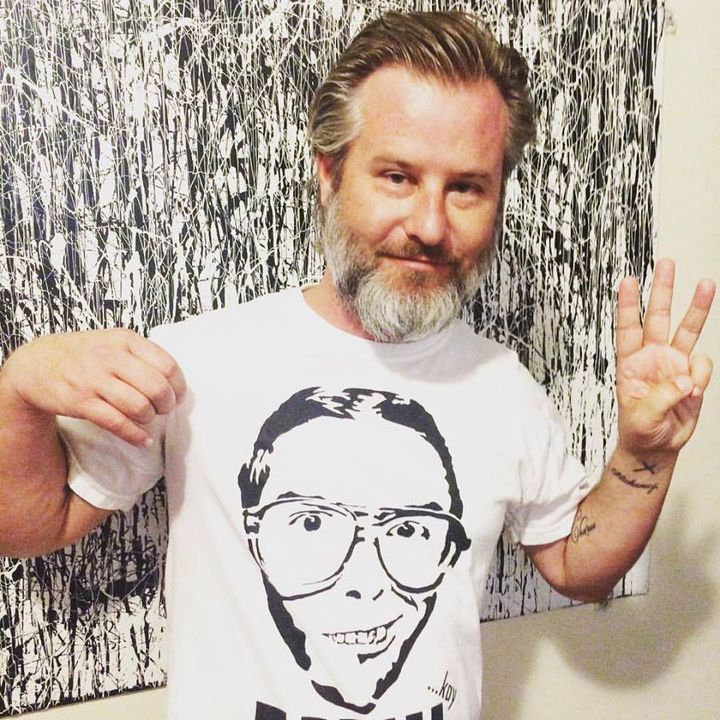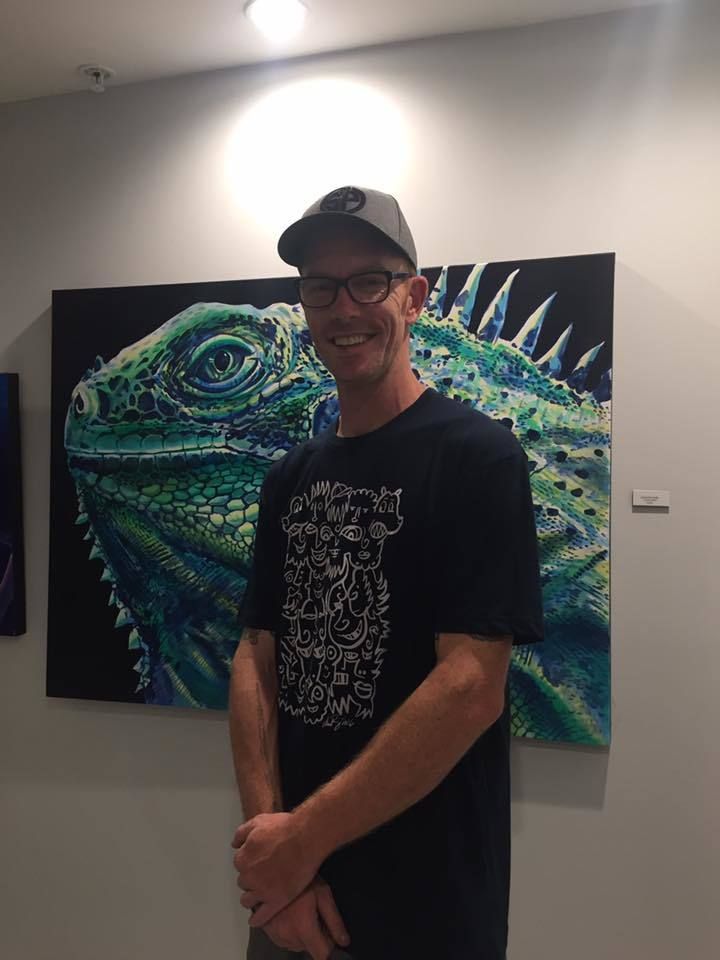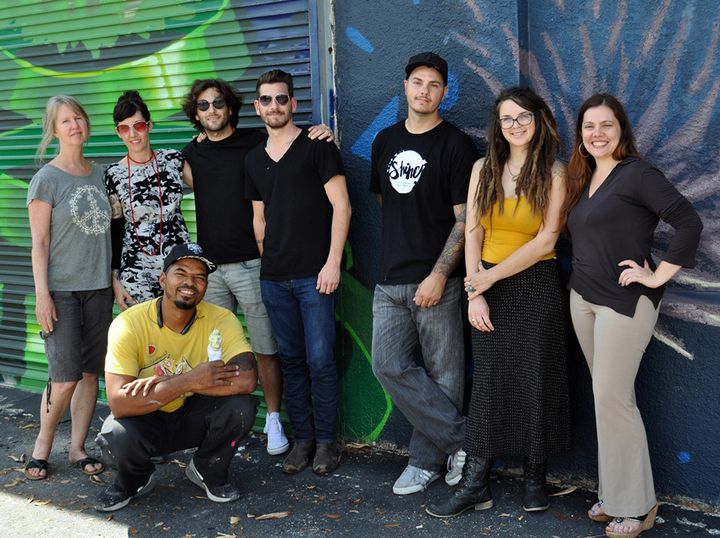“I really love your work. If only I had the money to buy art.” If you’re an artist you’ve probably heard this (and perhaps felt somewhat frustrated by it) more times than you care to count. If you’re not an artist, you’ve probably said this more times than you care to admit. You’re sipping on some inexpensive but deliciously complimentary wine (Trader Joe’s or perhaps the boxed variety) and enjoying the latest offerings by local talent during your city’s monthly art walk. A particularly arresting piece catches your eye and you stop to admire when the artist responsible for the work walks up and introduces himself. What to do? A bit of panic, or at least awkwardness sets in. Does he think I’m looking to buy? Is he fixing to lay a sales pitch on me? I’m just looking. I can’t afford to buy art. Where’s the nearest exit?! The truth is almost everyone can afford to support local creatives by purchasing original art or signed reproductions. Often the issue is not whether we have the expendable funds but how we prioritize our spending.
Many consider art a luxury beyond their reach yet tech toys and gadgets such as tablets and game consoles are commonplace among their possessions. The cost for such items almost always exceeds acquiring a piece of original art (depending on artist, type of work and size, of course). Gadgets, unlike art, are seldom sound investments as their value decreases the moment we use them or the next model becomes available to the public. These items, also unlike art, seldom contribute to local economies on an immediate and personal level.
I live and practice my craft in St. Petersburg, Florida, a town internationally renowned for its vibrant and diverse art scene. Its abundance of and “support” of public art is also widely known. I write “support” in quotation marks because I find this to be a sketchy term with a lot of grey areas which I feel deserves an article all its own. I intend to elaborate on that (as well as discuss it further in future conversations).
As with many art destinations, St. Petersburg was a once depressed area brought to life by independent artists who dared venture where others would not. These hard-working innovative individuals created an environment ripe for development and before long chic trendy restaurants and boutique hotels made their move. It sounds like the perfect combination, but what most fail to notice is that without an artist-friendly infrastructure in place, such growth and development often results in the creatives who paved the way being out-priced and displaced. Spaces which once served as affordable artist studios and out-of-the-box gallery spaces become “artsy” establishments dealing in mass-produced mass-marketed goods. $30 candles and high-markup fair-trade goods quickly replace local art. Thanks for everything, artists! Good luck in your future endeavors.
Many (most?) well-intended people sit comfortably with the impression that attending their local monthly art walk makes them supporters of art. Don’t get me wrong, I certainly don’t mean to undermine the importance of attending art openings and events. Don’t believe the artist who tells you they don’t need or want an audience for their work. We love the moral support and appreciation. But what is the compensation for the cultural and entertainment (and wine and cheese sampling that saves you on appetizers later at dinner during your night out on the town) creatives provide their communities? Just as a restaurant cannot go on without selling enough meals to cover their costs (and hopefully make a little profit), without art sales we artists cannot afford to keep our doors open. We’re not just artists, you see…we too are small businesses within your communities. So where is the disconnect? When you say “I love your work. I wish I could afford to buy art.” I believe you are sincere in the belief of what you’re saying. It is my theory that socioeconomic conditioning is much to blame here. We are taught to assign value to items which don’t retain it. We are taught that art is for the academic and the rich; perhaps for everyone to view and appreciate, but certainly not own. The reality is that original art is both a sound investment and quite attainable.
Here is a brief chat with Carla Bristol (Gallerist, Gallerie 909), Cory Allen (Gallerist/Art & Entertainment Public Relations), Derek Donnelly (Artist/Director of COVE and Public Art Project and Mitzi Gordon (Artist/Curator) on the subject:

Gallerist and community leader Carla Bristol’s Gallerie 909 features works by African/African-American and Caribbean artists.
John: What do you think is the biggest myth about collecting art?
Carla: That it’s expensive to become a collector.
Derek: Definitely…a lot of people believe they have to be wealthy to be a real collector.
Cory: In past discussions, I have found that most people believe that they have to have some level of art intellect in order to become a collector, which is nonsense. As with anything, knowledge is important, but it shouldn’t stand in the way of appreciating a piece of artwork and forming a collection.
Mitzi: I’ve often heard people say, “Oh, well I don’t know anything about art.” All you need to know is what moves you. When you’re really open to art, you will look at it and have an immediate response. Listen to that response, and you can build a collection. Budget does not have to be an eliminating factor, either. You just must find the art that fits your price point. Some of my favorite works of art were purchased for less than $100.

Cory Allen specializes in Art and Entertainment Public Relations.
John: What tips or advice can you give to someone who is considering becoming a collector?
Derek: I would tell anyone becoming a collector to buy what they like, not what a critic or trend tells them they should.
Carla: Support emerging artists. It’s the best way to get an original that may increase in value later. Buy for the love of the art. Be connected to the pieces you buy.
Cory: Just start! Get out to galleries, exhibits, and festivals – you’ll find a lot of amazing artwork that will meet your budget. Don’t focus on explaining to yourself or to anyone else as to why (you purchase a certain piece). People always feel they have to have a set explanation. If there is a connection between you and the work, then it is yours. Now, if you are collecting for monetary purposes, then that’s when knowledge is important. You must understand the market, just like purchasing stock or a house. You have to do your research.
Mitzi: Start with a bit of research into your local scene. If you’re not sure where to begin, search for your Local Arts Agency online—most major U.S. counties have a government office or non-profit agency responsible for serving as a hub of information about regional artists, venues, and exhibitions. A flip through your local alt-weekly newspaper (Creative Loafing, New Times, Village Voice, and similar publications) is another great way to find art show listings, often with a dash of critical perspective.
Scan the artist directory or event listings for images and styles you find pleasing. Maybe clean, modern black-and-white photographs catch your eye. Or ornate woodcuts. Or pop-art paintings in juicy hues. There’s no wrong answer, just follow your instinct. Use these explorations to define your style.
Then, get out to some exhibitions. Visit a nearby gallery or museum and consider the works in person. Talk to the curators and artists to learn more about your scene. Galleries often exhibit art in a wide range of price points. Soon you’ll be able to identify a few favorite local artists or venues, and you’ll be ready to plant the seeds of a new collection.

Artist/Gallerist Derek Donnelly with one of his “Lizard King” paintings.
John: I want to collect art but I only have $20 to spare. What should I do?
Carla: Art is everywhere, perhaps you could purchase a piece from a student. You could also consider starting your collection by saving to buy a limited edition print from an emerging artist.
Derek: Buy a print or something small from a local artisan market.
Cory: Yes. Start with your local art community. Not only are you supporting the local artists, you’re also establishing opportunities to grow as a collector. If you’re not in an area where artists are prevalent, you can find work online that meets your budget.
Mitzi: Free Art Friday is a fantastic national movement where creators gift small pieces of original art to the public, completely free. It exists in multiple cities, and can be found with a simple internet search. There is a bit of scavenger hunt involved, but find one piece you like and it’s yours to keep. You can offer support by photographing your new prize and thanking the artist on social media.
With just $20, you can also visit a local gallery or outdoor market and usually find a small print or postcard featuring some lovely artwork. Try looking for local markets that feature arts vendors and handcrafted items. Search for small art treasures like letterpress prints, hand-drawn buttons or postcards, and even custom-designed T-shirts. Art takes many forms, and not all are necessarily expensive

Artist/Curator Mitzi Gordon (second from left) with artists Suzy Schultz, Carlos Culbertson (AKA Zulu Painter, crouching), Bobby Durham, Michael Wayne, Freddie Fred, Emily Stone (StoneFree Studios), Kim Divito of St. Petersburg’s Bloom Art Center.
John: Is collecting art a real investment or just a hobby?
Derek: It can be both.
Mitzi: I don’t really think of it as either of these things—although it may be both—because for me, collecting art is a passion, stemming from a desire to surround myself with items that inspire thought and invoke beauty.
The art I buy may increase in value over time, thus making it a good investment, but that is not why I am buying. The vast majority of my art collection was bought, commissioned, or received in trade locally. So in that sense, collecting is an investment in my regional arts community, and even small purchases are contributing to the continued success of resident artists.
Carla: Collecting art can be a real investment depending on the pieces you buy. Art almost always go up in value.
Cory: The motivations of collectors differ from one another and for me, collecting art is unquestionably an investment – and I’m not just speaking monetarily. You’re investing in the artist, establishing a common bond through their work that represents the purpose of their creation and your appreciation. A collection of work are pieces of an ongoing puzzle that places the collector on display, not just the artist(s). The more you acquire, the more you know who you are as a person and that is why art and collecting art is very significant in our lives and communities. There are collectors who loosely refer to collecting art as a hobby, but they know and I know, it’s not a hobby, it’s a lifestyle. After acquiring an artist’s work, you’re responsible for continuing the dialogue.
John: What was the first piece of art you collected?
Carla: I purchased an original abstract watercolor piece at a flea market in Brooklyn. I still have that piece in my collection.
Cory: Looking back, it’s hard to say the first piece I collected, because at the time, I didn’t see myself as a “collector”. I’ve always had an appreciation for art and most of what I acquired was locally, mainly ranging from paintings to sculptures. Over the years, when I recognized that I was becoming more serious of collecting work, I primarily invested in prints. I have a flat file cabinet that allows me to safely store work, as not everything I own has space to be displayed. Now, if I have to make space for another painting or sculpture, I will.
Derek: The first piece of art I collected was actually a trade with my friend and mentor, the late Bill "WOO" Correira. I received a sea turtle from him, and gave him a Robert DeNiro portrait he watched me paint live on our first night painting together.
Mitzi: A delightfully creepy pen-and-ink drawing on mylar by Terry Pipitone, which I bought at Tampa’s Gala Corina in 2004. I think it was the most money I had ever spent on a piece of art before—maybe $200.
That was a big step for me. I started collecting more actively from there, spending what I could reasonably afford—sometimes $25, sometimes $250 or more—and building a collection that highlights some incredible Bay area talents. I’m proud to share this collection today, and to spread the word about our local artists whenever people visit my home.
